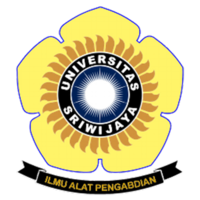Kajian Teknologi Budidaya Padi Sistem Hazton di Lahan Rawa Lebak Sumatera Selatan
Abstract
Syahri S, Somantri RU, Hutabarat YPAP. 2019. Study of hazton systems on paddy in swamp area, South Sumatera. In: Herlinda S et al. (Eds.), Prosiding Seminar Nasional Lahan Suboptimal 2019, Palembang 4-5 September 2019. pp. 163-177. Palembang: Unsri Press.
The study was carried out on 3 ha farmer’s field on swamp land in Gelebak Dalam Village, Rambutan sub-district, district of Banyuasin, from January to December 2017. The cultivation technology studied is the using of large number of rice seedlings which is known as Hazton system. The study was arranged on a randomized block design with a combination of varieties and number of seedlings. Varieties were used is Inpari 30, Inpari 33, Inpara 2 and Inpara 4 which tolerant to swamp area. The cultivation technologies, whereas, are consisting of Hazton 1/T1 (10-20 seedlings/hole), Hazton 2/T2 (20-30 seedlings/hole) and integrated crop management/PTT (T3). Data were observed is plant growth and yield of rice, pests attach and economic analysys. The results show that the best plant growth is Hazton T1. The number of productive tillers produced by Hazton T1 and T2 technology is higher than PTT technology, but the percentage of the formation of productive tillers is lower than PTT technology (<70% tillers were formed). Hazton technology influences the intensity of pest attacks, where the intensity of pest attacks is higher than PTT technology. The results of the study also showed that rice productivity produced in various treatments was relatively lower than the desired target, which in general rice province only reached 4 t/ha. The difference in average yield between PTT technology and Hazton is only 0.2 t. The economic analysis indicate that PTT technology is more profitable than the Hazton system, which is showed on both of B/C and R/C ratio.
The study was carried out on 3 ha farmer’s field on swamp land in Gelebak Dalam Village, Rambutan sub-district, district of Banyuasin, from January to December 2017. The cultivation technology studied is the using of large number of rice seedlings which is known as Hazton system. The study was arranged on a randomized block design with a combination of varieties and number of seedlings. Varieties were used is Inpari 30, Inpari 33, Inpara 2 and Inpara 4 which tolerant to swamp area. The cultivation technologies, whereas, are consisting of Hazton 1/T1 (10-20 seedlings/hole), Hazton 2/T2 (20-30 seedlings/hole) and integrated crop management/PTT (T3). Data were observed is plant growth and yield of rice, pests attach and economic analysys. The results show that the best plant growth is Hazton T1. The number of productive tillers produced by Hazton T1 and T2 technology is higher than PTT technology, but the percentage of the formation of productive tillers is lower than PTT technology (<70% tillers were formed). Hazton technology influences the intensity of pest attacks, where the intensity of pest attacks is higher than PTT technology. The results of the study also showed that rice productivity produced in various treatments was relatively lower than the desired target, which in general rice province only reached 4 t/ha. The difference in average yield between PTT technology and Hazton is only 0.2 t. The economic analysis indicate that PTT technology is more profitable than the Hazton system, which is showed on both of B/C and R/C ratio.
Keywords: hazton system, integrated crop management, paddy, swamp area, South Sumatera
Full Text:
PDFArticle Metrics
Abstract view : 466 timesPDF - 2051 times
Refbacks
- There are currently no refbacks.

